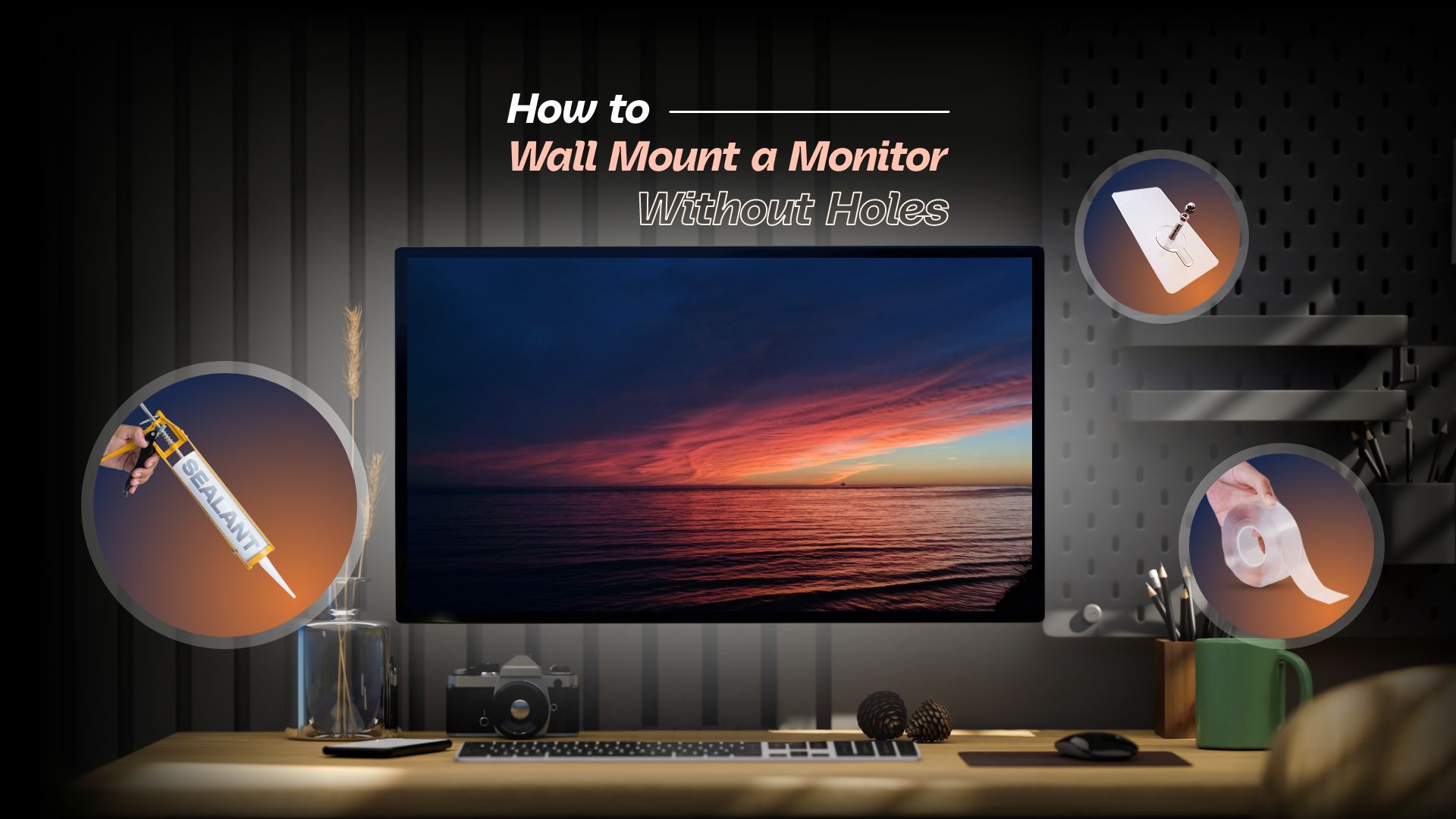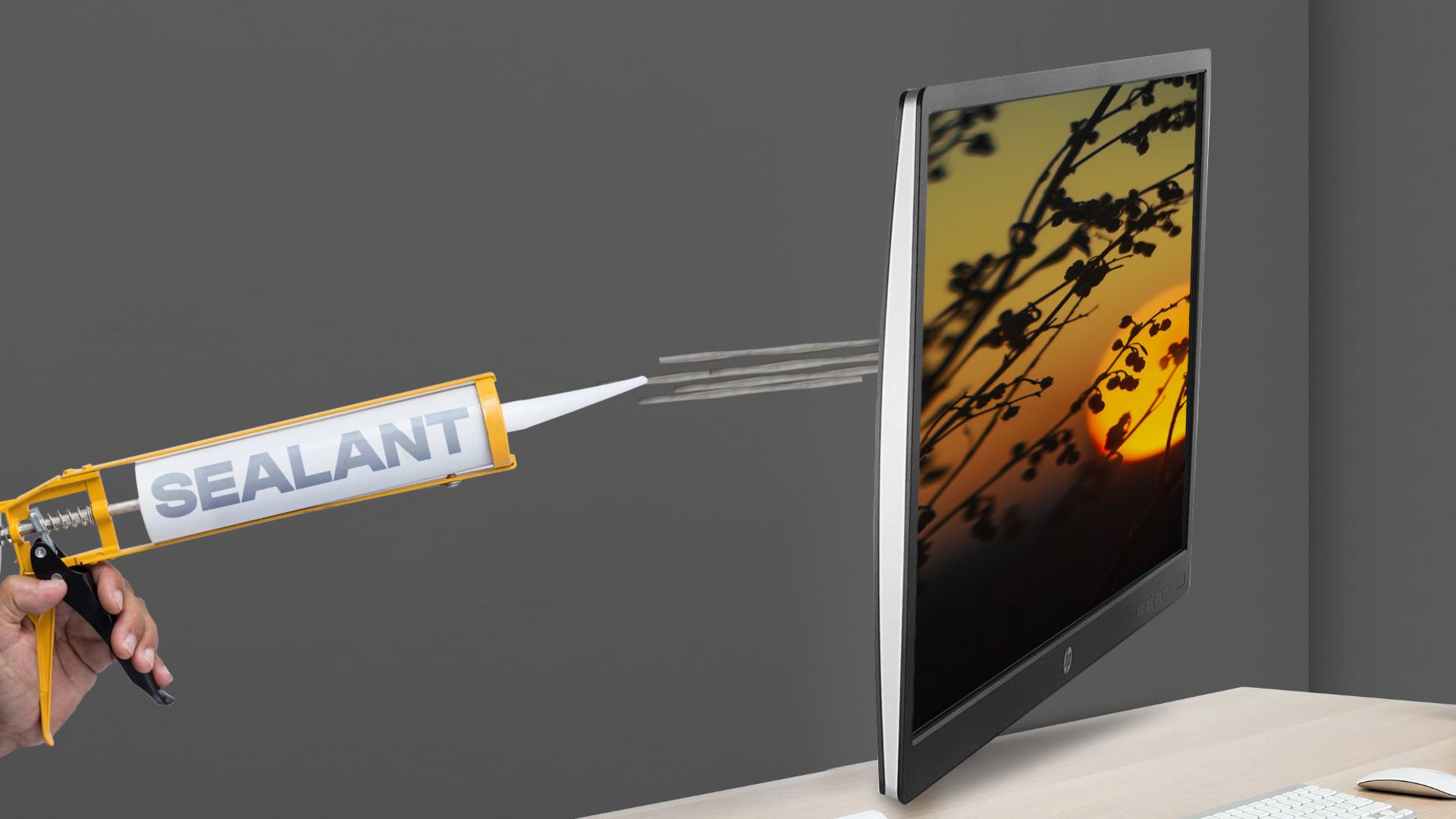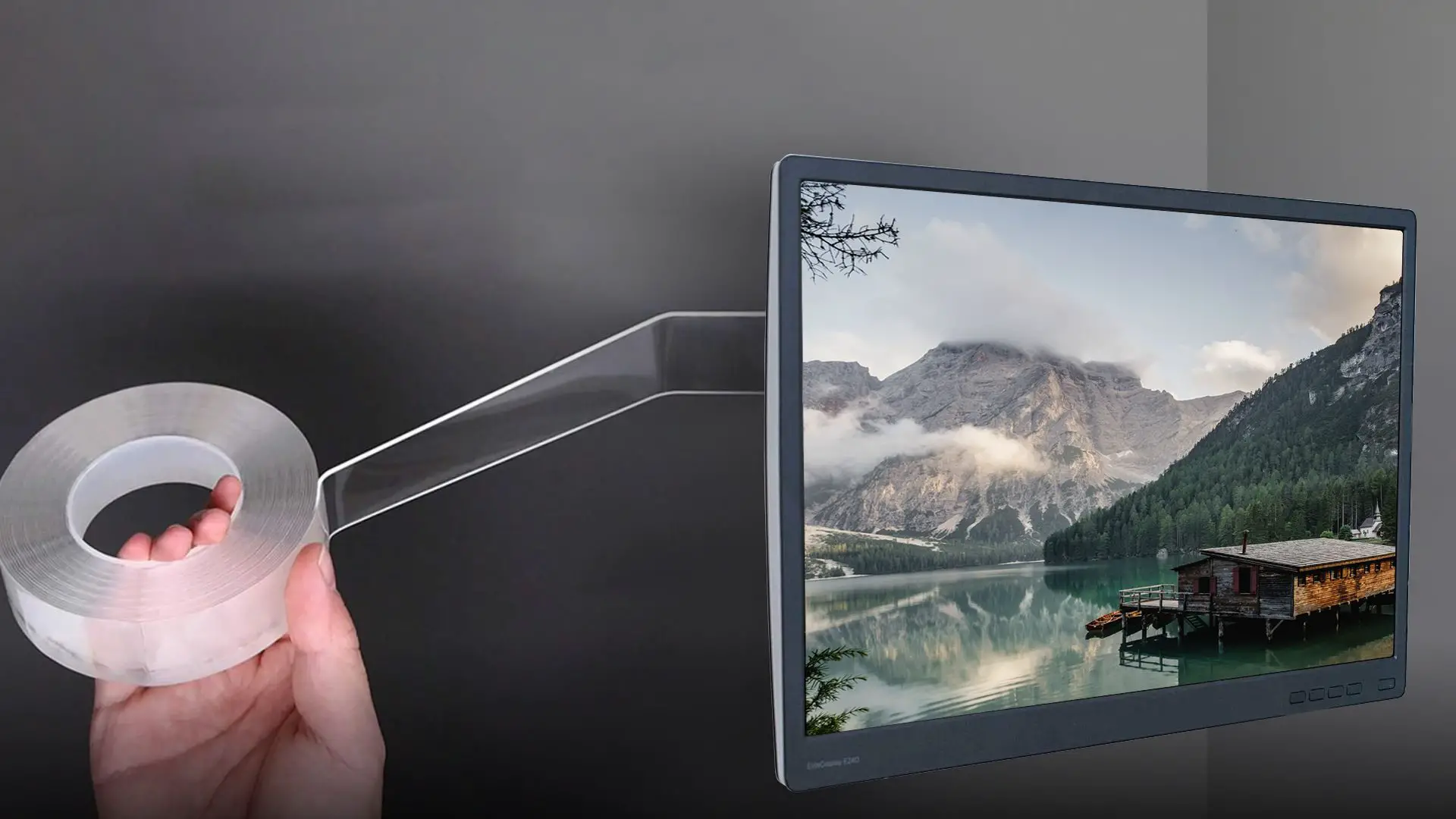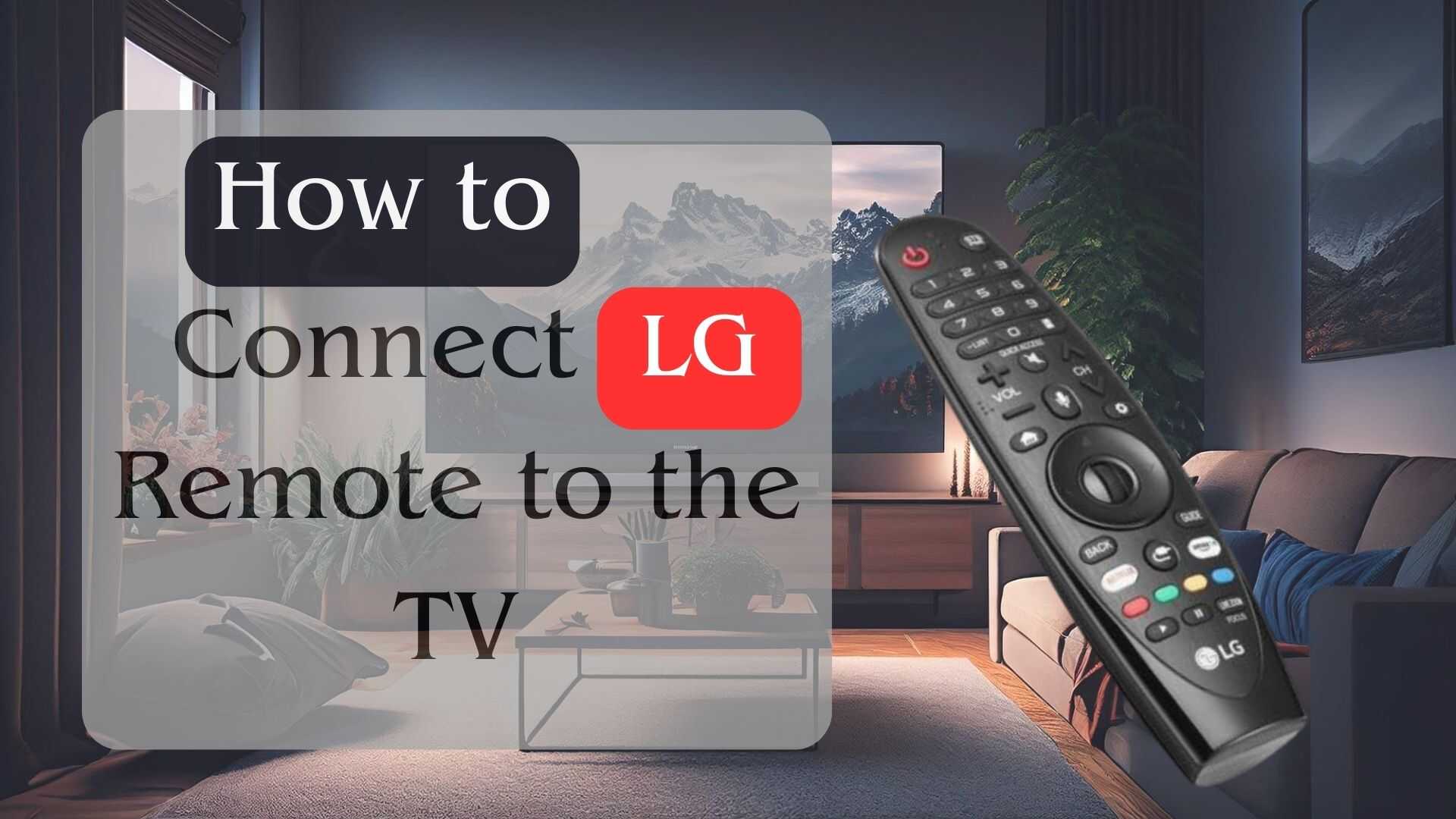How to Wall Mount a Monitor without Holes

Your monitor can be mounted in many ways for the best viewing experience. Mounting them on your wall gives you the best angle and frees up desk space. But let’s say you want to mount your monitor on the wall without adding any holes. The only way to get around it is if you know how to wall mount a monitor without holes.
For this tutorial, we’ll look at the many ways how to mount a monitor on a wall without any holes. We’ll also look at the pros and cons of each method. Then, we will look at some alternatives to wall mounting without drilling holes.
Why wall mount a monitor without holes?
But why would you want to learn how to wall mount a monitor without holes? Wouldn’t it be easier to drill a hook on the wall to mount your monitor easily? And it is, so long as you don’t mind all the dust and noise it’ll make. So, there are benefits to giving your monitor the holes-free wall mounting treatment, including not annoying your neighbors. Also, what if the monitor doesn’t have any VESA mounting holes? In that case, learning how to wall mount a monitor that doesn’t have VESA is important. But this way of mounting has its challenges. Each method has shortcomings, but letting the monitor fall and break is the most common.
Is it possible to wall mount a monitor without holes?
As hard as it may be to believe, it is possible to wall mount your monitor without making any holes. First off, the method by which you’ll mount the monitor must be strong and reliable. Secondly, depending on the mounting process, the monitor must be lightweight. The last thing you want is your monitor to drop down and break.
How to wall mount a monitor without holes | Top 7 methods
Now we know why we want a wall mount monitor without holes and that it is, in fact, possible. All that’s left is learning to wall mount a monitor without holes. For this section, we’ll look at the best methods and review how they work and their flaws.
Then, we’ll look at alternatives to holes-free monitor mounting before answering frequently asked questions.
How to mount a monitor without VESA holes using an adapter
First things first, if your monitor doesn’t have VESA compatibility (which is rare nowadays), you can use a VESA adapter to mount a monitor. What is a VESA mount adapter, you ask? It simply connects a VESA-compatible wall mount to a monitor that doesn’t have holes. You can get a universal VESA adapter from Amazon or any computer store nearby; just make sure it’s compatible with your display size and weight.
There are also adapters that are specifically made for certain monitors; be sure to check that for availability as well. Finally, once you have a compatible VESA mount adapter, here’s what you need to do.
- Disconnect any attached cable from the monitor.
- Remove the factory stand.
- Depending on your VESA adapter type, drill on your wall or drywall to install it.
- Then, simply mount your monitor on the VESA adapter. Adjust it for ergonomics if needed.
Use sealant to wall mount monitor without holes

One of the most well-known ways to mount your monitor without drilling holes is by using grab adhesives. Using a strong sealant isn’t just one of the best ways for them, but also the strongest. Each shot of most sealants can hold up to 44 pounds (20 kg). Simply apply four shots of the sealant on the back of the monitor and place it on a clean wall surface.
However, it isn’t without its hiccups. You cannot use it on painted surfaces, especially ones that can easily peel. Determining its integrity is the one chief problem of using a sealant, and it’s the same for all adhesives. It’s not uncommon for the adhesive to deteriorate slowly over time, and it’s difficult to gauge when it will give, especially if the monitor is very heavy.
Check out Gorilla Waterproof Silicone Sealant on Amazon
Use adhesive tape to stick your monitor to the walls

Another way to wall-mount your monitor without holes is by using adhesive tape. More specifically, double-sided adhesive tape will stick to both the wall and the monitor in question. This is best used on lightweight monitors for apparent reasons.
- Clean the surface of the wall you want to put the monitor on and wait for the surface to dry.
- Once dry, place tapes on the wall in a square formation.
- Finally, peel the other side of the tape and mount the monitor onto it, firmly pressing it for a secure fit.
Naturally, this method doesn’t inspire confidence in the wariest, wary customers. An adhesive tape is fragile and will likely drop the monitor. The sealant is at least strong, if not the strongest, of the adhesive options, not so much for the tapes. If you want to mount your TV without drilling into the wall, this is not the most reliable method out there.
Check out Wotec Extra Large Double Sided Mounting Tape on Amazo
Use adhesive screw for wall mounting your monitor without drilling
Let’s say you have a monitor with a monitor hole, and you can mount it with a screw hook. If you’re mounting your monitor without drilling holes for a screw, this would be where most people would fold, Thankfully, with an adhesive screw, you can hang your monitor on the wall without making a hole for the screw.
- Thoroughly clean the surface of any dust and sand, then firmly press the adhesive tape against the wall.
- Next, while holding the screw against the wall, inject the adhesive into the hole, until it emerges from the smaller hole.
- Then wait 12 hours before mounting your monitor onto it.
They are mainly designed for walls made of cement or rough-brick walls. We’d heavily recommend against a painted surface, especially those that peel.
Check out Adhesive screw hooks on Amazon
Wall mounting a monitor with brick clamps
Let’s look at another alternative, brick clamps. These clamps hang off the gap between the top and bottom sides of bricks. But, if the gap is too shallow and needs to be deep, there is a way around this. Simply chisel the mortar off the horizontal edge of the bricks. Then, fit the brick clamp into the edge before mounting the monitor.
Yes, it’s cheating a little, but think about it like this. You’re not making any holes, it can reliably hold the monitor, and the process doesn’t even make too much noise. The one thing holding this method back would be how situational it is. The effectiveness of the brick clamp is dependent on the brick wall and how the bricks are put together.
Wall mounting a monitor with mounting rails
While visiting a museum, you might have wondered how they mounted the painting onto the wall. They’re suspended on the wall thanks to mounting rails. You can hang your monitor on it without making any mounting holes. This is by far the simplest and most elegant of all the mounting methods. So, let’s look at how to wall mount a monitor without holes using mounting rails.
- Attach a long piece of rail-embedded metal or wood onto the wall.
- Attach another bar to hold the ropes with its hooks, suspending the monitor. This means you can hold in any orientation you want.
- Finally, fix the other end of the ropes to the monitor to the wall.
Believe it or not, it’s the safest option on this list that is neither adhesive, scraping off mortar, or cheating. You do, however, have to consider the monitor’s weight before going through with it.
No-stud TV Mount without drilling holes
This method might be cheating a little, but it gets the job done, so hear us out on this one. A non-stud TV mount is used to suspend and securely mount a television onto the wall, so how does it work? All you have to do is nail the bracket into the wall and mount the TV or monitor. After all, it’s still technically a wall mount without holes since there are nails inside.
- Locate the VESA hole behind your monitor.
- Then, install the TV bracket with the provided bolts using those holes.
- If the mount came with security bolts, you can attach them to the monitor. The cable should fall 1″ above the bottom of the monitor; tie the knot if the cable is too long.
- Afterwards, tap the nail into the bracket to nail it on the wall. Start from the center and work your way to the sides. Ensure that the nailed bracket is uniform.
- Finally, hang your monitor on the bracket. Make sure that the monitor firmly engages with the bracket. Anchor the aforementioned security cable with nail and screwdriver.
Of course, like most instances of cheating, there are consequences, the noisy kind in this case. Hammering the nails into the wall will cause a lot of noise; volume depends on your skills with a hammer. Another thing you might have noticed is that the method assumes the monitor you’re using has VESA holes behind it.
Check out ECHOGEAR No Drill TV Mount for Drywall on Amazon
Do all monitors have mounting holes?
No. Not every monitor has mounting holes behind them. Some recommend drilling holes in the back of the monitor. Conversely, we are against doing that vehemently since it will likely damage the monitor’s internal components. This is why VESA adapters exist, to compensate for this lack of mounting holes.
How do I know if my monitor is wall-mountable?
When determining whether a monitor is wall mountable, there are a couple of aspects to factor in. The easiest is to check the back of the monitor for VESA mounting holes and their positions. The second is the monitor’s weight; don’t bother wall mounting it if it’s too heavy.
Can I use a TV mount for a monitor?
Yes. For this to be possible, two things need to happen.
- The monitor must be VESA-certified and have VESA mounting holes behind it.
- The TV mount must also be made with a VESA-certified TV in mind. This can work if the position of the VESA mounting holes behind the TV is the same as the monitor.
In Conclusion
From the outset, mounting your monitor without drilling any holes sounds impractical. But as we’ve learned, not only is it possible, but it has its advantages. Alongside learning how to wall mount a monitor without holes, we hope you’ve also learned about its application. Tell your neighbor to thank us in advance for the reduced headaches, and we’ll call it even.
If you’ve found this tutorial helpful, then might we recommend a tutorial on setting up a second monitor for gaming. If you’re looking for the best triple monitor stands to help you with the stock exchange, we have a list for that, too. Or a list of the best quad monitor stands if you want to go the extra mile.







